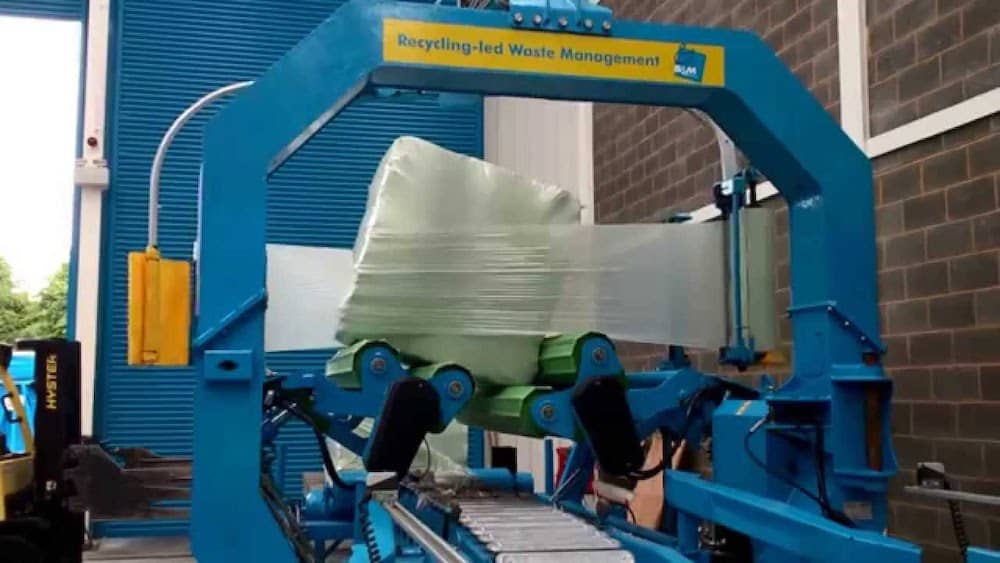
What happens to your office waste when it leaves the office is not something many people would worry too much about, but for us, it’s part of our social responsibility to ensure we minimise our environmental impact.
Working with our waste partners B&M, we ensure that NONE of our office waste goes into landfill. This is a big step and makes huge financial and environmental sense.
30% of our waste goes straight into recycling. Most of this comes from the paper recycling containers we have throughout the office, but then most offices now have these.
The most interesting development is that the other 70% of our waste now goes into what is called Refuse Derived Fuel or RDF, from non-recyclable general waste. This is made up from all of the mixed waste such as laminated paper, mixed plastics and other multi-substrate materials that can’t be broken down to their recyclable parts.
This is now all gathered together, shredded and compressed and then baled into manageable sized cubes. Once this is done, it’s sent to a combined heat and power (CHP) plant in Hamburg, Germany. Our partners B&M are now able to process almost 100,000 tonnes of waste, most of which would have previously been sent to landfill.

Overall, we produced 6.29 tonnes of mixed waste. Of this, 1.88 tonnes was immediately recycled and 4.41 tonnes converted to RDF.
RDF is not very calorific but still produces 575kWh per tonne. By comparison, coal produces 2,460 kWh of electricity generated per ton of coal burned. However, the advantages of not burning fossil fuels are well documented and increasingly obvious. According to Wikipedia, waste to energy plants, in the form of modern incinerators reduce the volume of the original waste by 95-96 percent and must meet strict emission standards to remove nitrogen oxides (NOx), sulphur dioxide (SO2), heavy metals and dioxins.
Overall, we therefore produced 2,533 kWh of energy, enough to power a family-sized electric car for 10,637 miles or complete 2,302 wash loads.
The waste has already been mixed and shredded before leaving the UK. It is burned in an incinerator at temperatures over 850°C. The waste is moved through to a combustion chamber where oxygen is fed into it and extreme heat is used to create steam. This is used to generate electricity and provide heat to the local area via a CHP system.
Whilst it’s still our intention to continue to minimise our waste, it’s encouraging for us as a business to learn that anything we do still produce, is no longer being treated as waste and being cleverly re-used as a fuel.
You can watch the process, in action here.
If you would like to discuss any of our services, please call 0151 343 1963 or complete the form below and we will be in touch shortly.